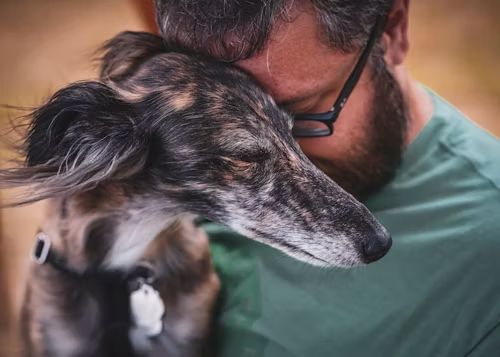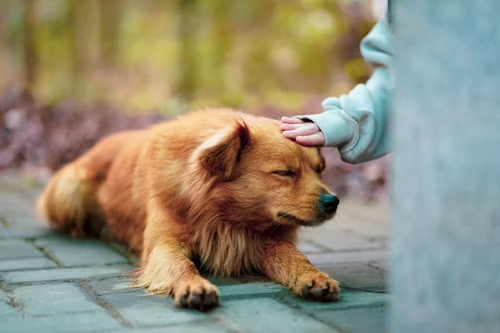Watching your beloved dog lose their sight can be heartbreaking. But take heart, blindness doesn’t mean your furry friend can’t still live a happy, healthy, and full life. Dogs are incredibly adaptable creatures. With your love, patience, and a few lifestyle adjustments, your blind dog can continue to enjoy every moment by your side.
This complete guide will walk you through everything you need to know about how to care for a blind dog from understanding vision loss to training, home safety, and emotional support.
Understanding Blindness in Dogs
Just like people, dogs can lose their vision for many reasons. Some are born blind due to genetics, while others may lose their sight gradually or suddenly due to conditions like cataracts, glaucoma, diabetes, or retinal diseases. Injuries or infections can also cause partial or total blindness.
While the cause of blindness varies, the good news is that dogs rely more on their sense of smell and hearing than on vision. Their powerful noses and keen hearing help them map their environment and recognize familiar people and places even without sight.
Knowing this helps you approach care with confidence; your dog’s other senses will naturally step up to fill the gap.
Signs Your Dog May Be Losing Vision
If your dog hasn’t been diagnosed but you’ve noticed some odd behavior, here are common signs of vision loss:
- Bumping into furniture, walls, or door frames
- Reluctance to go outside, especially at night
- Startling easily when approached
- Cloudy or discolored eyes
- Hesitation to jump on furniture or climb stairs
- Increased anxiety or clinginess
If you notice any of these signs, schedule a veterinary visit as soon as possible. Early detection can sometimes slow the progression of certain eye conditions and help you plan for necessary adjustments.
Visiting Your Vet: Getting a Proper Diagnosis
A vet visit is the first step to confirm if your dog is blind or losing vision. Your veterinarian may perform an eye exam, blood tests, or refer you to a veterinary ophthalmologist for specialized care.
Understanding the cause and whether the blindness is temporary or permanent helps you make better decisions. In some cases, surgery or medication can improve or restore sight. In others, your role shifts to helping your dog adapt. Ask your vet about:
- The underlying cause of blindness
- Whether the condition is painful or progressive
- Long-term management and medication
- Tips for keeping your dog safe at home
Adjusting Your Home for Safety
A blind dog depends on a consistent and safe environment. Here’s how to create one:
1. Keep Furniture in Place
Dogs learn their surroundings through memory, and once your blind dog figures out the layout of your home, it’s best to keep things as steady as possible. Try not to rearrange furniture or move large objects around.
When the layout stays the same, your dog can navigate without fear of bumping into tables or walls. Even small changes can be disorienting, so consistency gives them a sense of control and comfort in their daily life.
2. Create Clear Pathways
Your home should have open, predictable pathways that your dog can walk through freely. Keeping floors clear of clutter like bags, shoes, or toys makes it easier for your dog to move around safely.
If you have sharp-edged furniture or low tables, consider moving them out of the way or adding soft padding to protect your dog from injury. The idea is to create a simple, obstacle-free space where your dog can explore without worry.
3. Use Textures and Scents
Dogs rely heavily on their senses of smell and touch, so you can use both to help your blind dog navigate. Try placing rugs with different textures at key locations like in front of doors, near the food and water bowls, or by the stairs.
This helps your dog recognize important spots by feeling the floor under their paws. You can also use gentle, pet-safe scents such as lavender or vanilla near their bed or food area. These subtle markers help them identify spaces by smell, giving them an easy way to find their way around.
4. Block Dangerous Areas
There are certain parts of your home that can pose risks to a blind dog, such as stairs, balconies, or swimming pools. Installing baby gates or using barriers to block off these areas is an effective way to keep your dog safe.
Until your pet has fully adjusted to moving around without sight, it’s best to prevent access to places where they might fall or get hurt. These small precautions can go a long way in giving you peace of mind and protecting your dog from accidents.
5. Keep Food and Water Bowls in the Same Spot
Routine and consistency are especially important for a blind dog, and that includes mealtimes. Always keep your dog’s food and water bowls in the same location. They’ll quickly memorize where to find them and won’t waste energy searching or risk spilling water as they explore.
Moving their bowls or bed too often can confuse them and make them feel insecure. When everything stays where they expect it to be, your dog feels more independent and confident in their surroundings.
Training Tips for Blind Dogs
Training a blind dog requires patience and clear communication, but it’s very possible and rewarding.
1. Use Verbal Cues
Blind dogs rely on your voice to understand what’s happening around them, so clear verbal commands are essential. Short, simple words work best because they’re easy for your dog to recognize and remember.
For example, you might say “stop” when you need them to pause, “step up” or “step down” to guide them on stairs, and “careful” when there’s something in their way. Speak in a calm, reassuring tone, and be consistent with the words you use. Over time, your dog will associate each phrase with a specific action or situation, allowing them to move confidently and safely with your guidance.
2. Incorporate Sound Cues
Sound cues are another powerful way to help your blind dog navigate their world. You can use bells, clickers, or other distinct noises to give them directional guidance. One simple trick is to attach a small bell to your shoes or ankle so your dog can follow the sound of your footsteps.
This helps them stay close to you during walks or when moving from room to room. You can also use a consistent clicking sound or whistle to signal positive reinforcement or to call them toward you. With time, your dog will begin to associate each sound with meaning, making everyday movement feel predictable and safe.
3. Reward with Scent and Sound
Just like sighted dogs, blind dogs respond well to positive reinforcement. The key is to use their strongest senses — smell and hearing; to reward and encourage good behavior. Treats with a strong scent can be especially motivating because your dog can easily recognize them.
Combine these rewards with verbal praise or cheerful tones to make the experience even more engaging. When your dog successfully follows a command, celebrate it with enthusiasm. This not only reinforces the behavior but also builds trust and happiness in your relationship.
4. Leash Training
Leash training a blind dog requires a gentle and communicative approach. Instead of using a collar, opt for a harness that allows you to guide them with subtle, comfortable movements. During walks, talk to your dog often so they always know where you are and what to expect.
Phrases like “this way” or “slow down” can be reassuring, especially in unfamiliar areas. Keep walks calm and steady, allowing your dog to explore at their own pace. With patience, your blind dog will learn to rely on your voice, the feel of the leash, and their sense of smell to enjoy walks safely and happily.
Communicating with Your Blind Dog
Blind dogs rely on your voice and touch. Speak to your dog before approaching or petting them to avoid startling them. Use a calm, reassuring tone; dogs are experts at reading your emotions.
Physical touch is also comforting. Regular gentle petting or brushing helps them feel loved and secure. Establish daily bonding moments through touch and voice, which can replace the visual connection they’ve lost.
Maintaining a Routine and Emotional Wellbeing
Blind dogs thrive on routine. Keeping feeding, walks, playtime, and bedtime consistent helps reduce anxiety. Predictability builds confidence.
You might notice your dog becomes clingier or more anxious after losing sight. That’s normal. Provide extra affection and reassurance. Avoid leaving them alone for long periods, especially in the early adjustment phase.
Music or white noise can be soothing when you’re away. A radio left on low volume helps them feel less alone.
Toys, Exercise, and Enrichment for Blind Dogs
Playtime is still essential. Blind dogs can enjoy exercise and mental stimulation just like any other pup.
Great Toys for Blind Dogs
- Scented toys that engage their sense of smell
- Noise-making toys like squeaky or crinkle toys
- Treat-dispensing puzzles for mental enrichment
- Textured toys that provide tactile feedback
Exercise Tips
- Walk in familiar areas with consistent routes.
- Keep your dog on a leash at all times outdoors.
- Visit secure fenced areas if you want off-leash time.
- Allow them to explore slowly; sniffing is their new way of “seeing.”
Diet and Health Care Considerations
Blindness doesn’t change your dog’s nutritional needs, but maintaining good health supports their overall wellbeing.
- Choose a balanced, high-quality diet.
- Ask your vet if omega-3 fatty acids or antioxidants may help eye and brain health.
- Watch calorie intake, as blind dogs may exercise less.
- Schedule regular vet checkups to catch other age-related conditions early.
Helping Other Pets and Family Members Adjust
If you have other pets, introduce your blind dog’s new condition gently. Let them interact under supervision until everyone feels comfortable. Most pets adapt quickly and may even become protective.
Educate children or visitors to speak softly before touching and to never startle your dog from behind. Creating a calm, respectful environment ensures your blind dog feels safe around everyone.
When to Seek Professional Help
Sometimes, even with your best efforts, your dog might struggle to adjust. Signs of depression, aggression, or withdrawal should not be ignored.
A certified dog behaviorist or blind dog trainer can offer personalized guidance. Support groups for owners of blind pets are also valuable sources of encouragement and practical advice.


